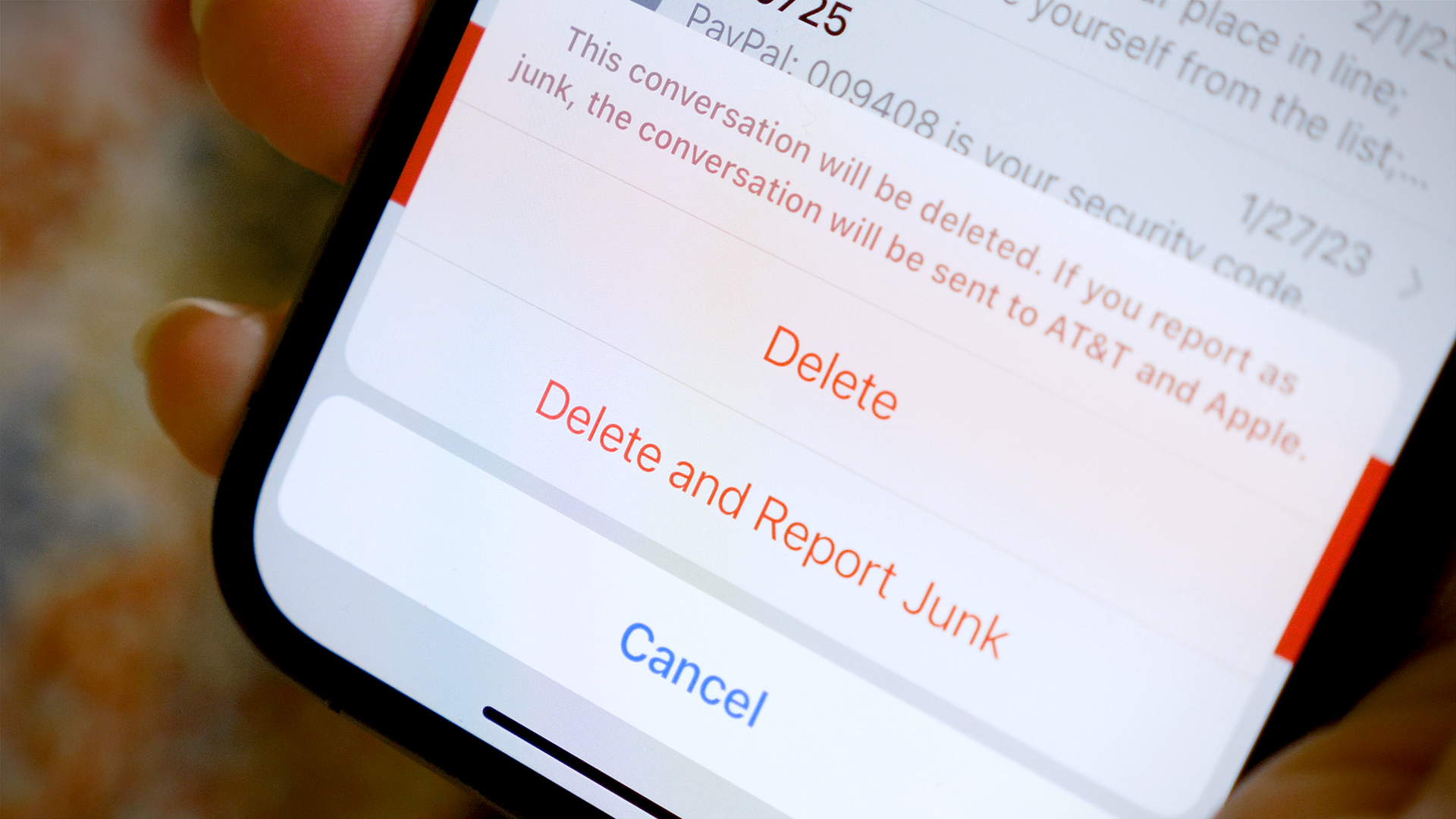Hey, politicians, stop texting me: How to get the candidate messages to end

Stop! Don’t reply “Stop” or Stop2End to any more infernal political text messages asking you to take a poll, click a link, or donate. That’s supposed to work, but it’s not. Just ask anyone who has tried it lately.
Replying with anything—an expletive tirade, photos of your cats’ litter box, or a straight-out STOP—tips the unethical text vendors that they have a working number. In other words, the good guys see, “Stop bugging the living daylights out of these fine people,” while the bad guys read, “Open the fire hoses and send ALL the texts.”
How to stop political texts on your smartphone
Sadly, there’s no single, free, universal “mute” button to send annoying political texts to cellphone purgatory … for good. But there are a whole lot of ways to slow them down.
Here’s where to start:
- Respond by texting STOP to the message. This works if the sender is a legitimate business or organization because it must comply with the law. The Federal Communications Commission can fine them a pretty penny if they don’t stop harassing you.
The FCC says the same rules should apply to campaigns, too, but here’s where it gets tricky: Political campaign texts are exempt from the Do Not Call list.
They’re supposed to have your consent to text you, but how and where they get your permission to mass-message you is anyone’s guess. But sometimes they don’t need your OK − like if a real person taps out the message by hand − versus the “auto-dial” tech that firehoses to thousands of numbers at the same time. Those political robotexts are not allowed, according to the FCC.
So how did they get your number, and when did you tell someone it was OK to light up your phone at all hours of the day and night? It was most likely in the fine print of a website when you bought something online, used a social media platform, or clicked “Agree” to some end-user form that allows the sharing of your phone number with “other service providers.” Often, data brokers are just hoovering up information and selling lists to the highest bidder, too.
Call-blocking service Robokiller says that in 2022, Americans received a record 15 billion political texts. That's an average of 50 messages for every phone in the country. It’s no surprise that 2024 is expected to shatter that record.
- “If you are receiving texts that you didn’t ask for, report the sender by forwarding the texts to 7726 (or "SPAM").
- Click "Delete and Report Junk” and block the sender.
Use your phone’s built-in spam filter
You’re not quite done yet. If you have an iPhone or Android device that has been updated within the past few years, there are built-in features you should take advantage of:
- On iPhone: Open Settings and tap Messages. Scroll down and toggle Filter Unknown Senders to the "on" position. From now on, texts from people who aren’t in your contact list will go to a separate text inbox.
- On Android: Open the Messages app and navigate to the Settings menu. From here, select Spam Protection and then enable it. Keep in mind that different Android phones have slightly different menu layouts.
After I did everything I listed above, most of the spam texts disappeared in about a week.
How do you know if the text is spam?
If you’re getting texts you didn’t ask for, consider it spam. If the message has a sense of urgency and asks you to do something immediately, that’s a massive billboard-sized red flag.
Also, never click on a link − as in never − no matter what. Many contain malware or take you to a fake site that might look legit, but if you donate money, it goes to a scammer, not a campaign.
The only time it’s OK to click a link in a text is if it’s from someone you know well, like a family member or good friend. I am even suspicious of those now sometimes, too, and will call or text that person directly to ask if they sent the link to me before I open it.
Scammers often use spoofed phone numbers − like a number with your local area code − to look legit. Don’t fall for it.
Other ways to spot a scam include:
- A “short code” number. Call-blocking service called Robokiller says about 60% of spam messages arrive via short code − five- or six-digit phone numbers. Same goes for strange long numbers, too.
- The “Hey, it was great to see you last night” messages from someone you don’t know. You might be tempted to text back “I don’t know you,” but it’s better to delete/report/block. Responding just lets them know they have a live number, and they’ll hound you even more.
- Misspellings, poor grammar or calling you by the wrong name.
- The “You’ve won a prize” texts from a business, sweepstakes or debt relief.
- Job offers.
- Any message asking for personal details of any kind.
There’s an app for that
There are a handful of apps for iPhone and Android devices that serve as an additional line of defense by filtering out spam calls and texts reported by other users. I’ve used several of these apps, including NoMoRobo, Robokiller and YouMail.
To get the most out of them, you’ll need to sign up for a subscription. Pricing varies, but expect to pay $5 to $15 a month. The added bonus is that they help prevent spam phone calls, so you get a full-featured service that’ll keep your phone much quieter, too.
But the only surefire way to stop scammers is to stop paying them. Be sure to share this information with everyone you know so we can put them out of business for good.
This story has been updated with new information.